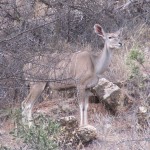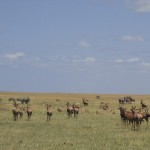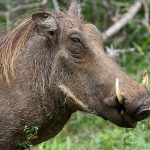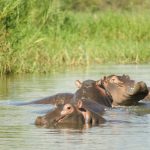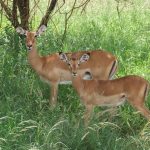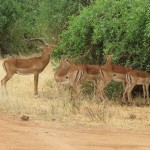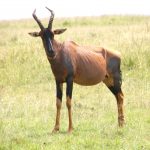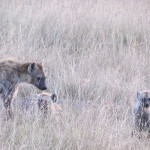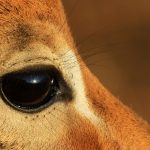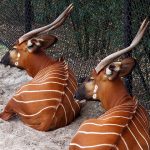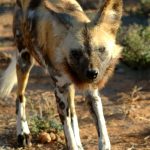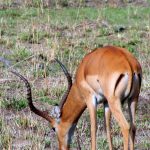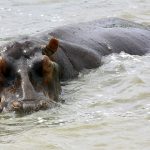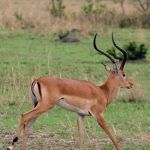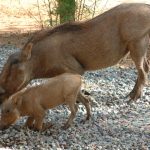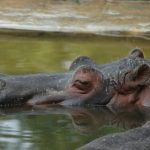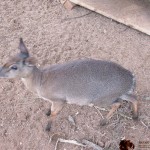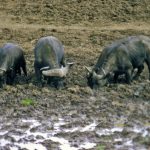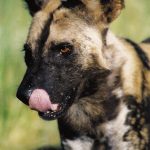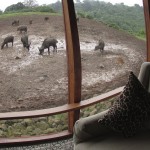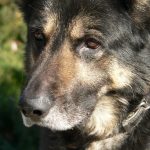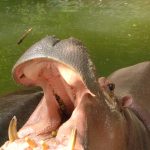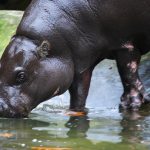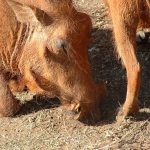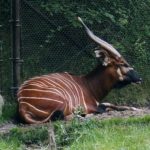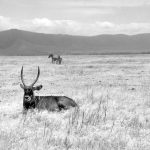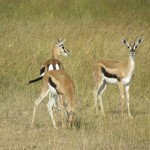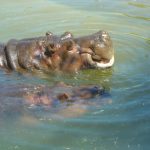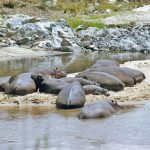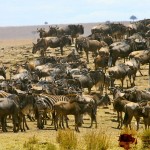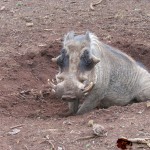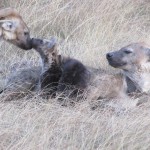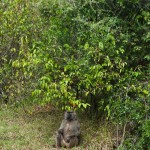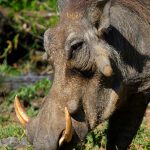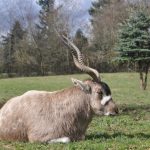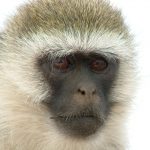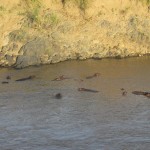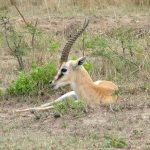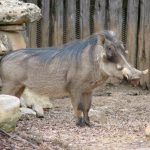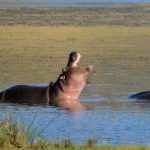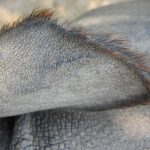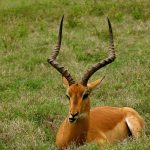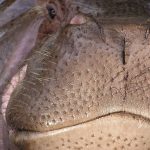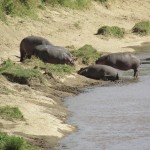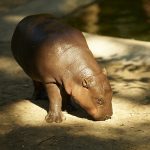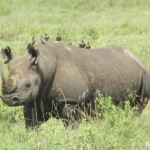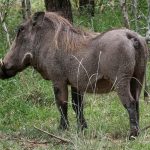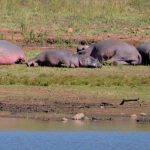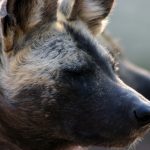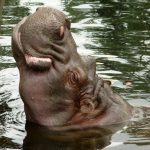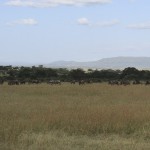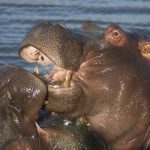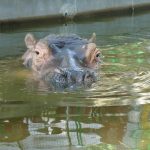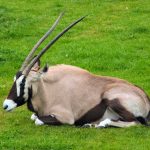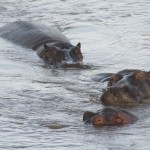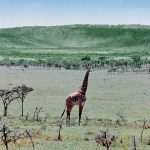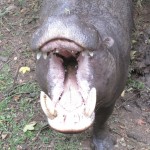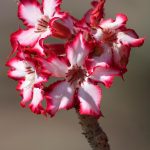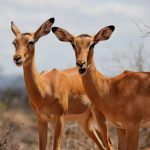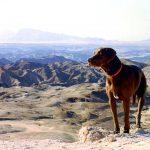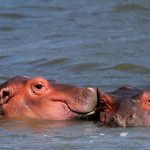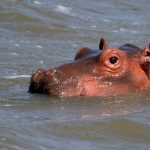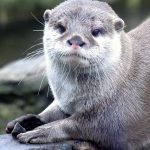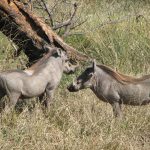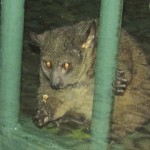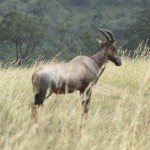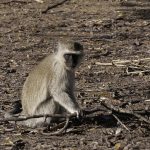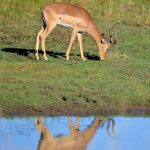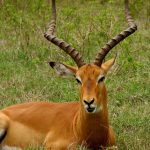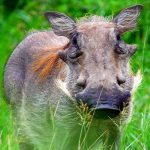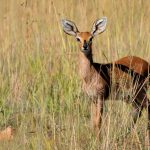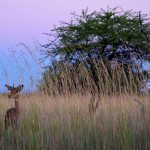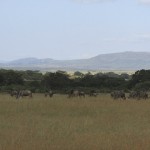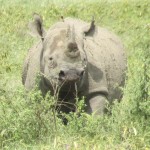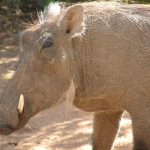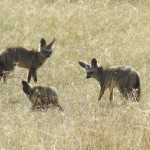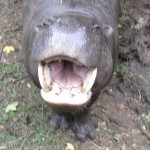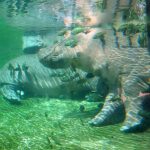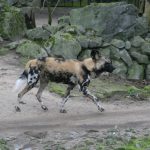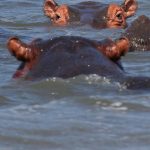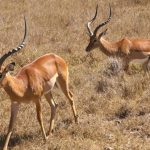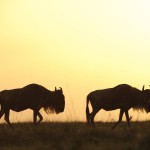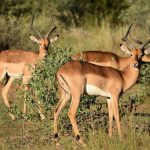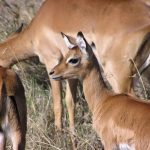- The most famous Kenyan animals are the Big Five
- Hippopotamus in the water.
- Common hippopotamus is known as hippo.
- It is a scary thing to hear the lion roaring in Kenya
- Close-up of a warthog.
- The patas monkey is also known as the wadi monkey
- Impala is an antelope.
- Meru and Samburu in the northern Kenya are home to some interesting dry country species
- The scientific name for vervet monkey is Cercopithecus Aethiops
- Impala fighting.
- Impala is the sole member of the genus Aepyceros.
- The scientific name for impala is Aepyceros Melampus.
- Safaris form Kenya’s largest chunk of GDP
- An adult female warthog weighs between 99 – 170 lbs.
- Hippopotamuses have unique skin.
- Jackal is going for a hunt.
- The African porcupine is a species of rodent
- Pigmy hippopotamus.
- The African buffalo is also know as Cape buffalo
- The Masai Mara is the best known reserves in the whole of Africa.
- Young impalas.
- Hippos in the river.
- Impala.
- Hippo heaven.
- Impala on safari.
- In Kenya, the habitats of wildlife animals range from the Forest areas to Savannah to the Wetlands
- Wilidlife safaris form Kenya’s largest chunk of GDP
- It’s an Impala.
- The Grant’s gazelle can be seen in northern Tanzania, South Sudan and Ethiopia, the Kenyan coast and Lake Victoria
- The topi antelope is a big one with a dark sign.
- Wilidlife safaris form Kenya’s largest chunk of national revenue
- Impala belongs to the Animalia kingdom.
- The habitats of the animals in Kenya range from the Savannah, to Wetlands all the way to the Forest areas
- Meru and Samburu in the northern Kenya are home to some interesting localized country species
- African wild dog sleeping
- Impala eye close-up.
- Impalas.
- Impalas at the zoo.
- A rhinoceros is an odd-toed ungulate in the family of Rhinocerotidae
- Rare dog
- Sole member of the genus Aepyceros, impala is found in eastern and southern Africa.
- It sure is a sight to see animals in their elements and in their natural habitats in Kenya
- Jackal
- The warthogs are very quick.
- The most deadly land animal in Africa.
- At least two million ungulates move throughout the Mara-Serengeti eco-system
- Impala is found in eastern and southern Africa.
- The warthog is a wild member of the pig family.
- Female impala.
- Hippo wallowing.
- In Kenya, the habitats of animals range from the Forest areas to Savannah all the way to the Wetlands
- The wildebeest migration in Masai Mara is from June to October
- Genet cat belongs to the genus Genetta
- It is a sight to see animals in their elements and in their natural habitats in Kenya
- This is an impala.
- The rock hyrax is also called the rock badger
- A qualified field guide in Kenya will be able to give information on wildlife behavior
- Hungry hippopotamus.
- Ultimate game viewing times in Kenya are from June to October
- Animals in Masai Mara, a park reserve which is a continuation of the Serengeti National Park in Tanzania named for the Masais and the Mara River.
- Warthogs In a zoo.
- The common hippopotamus is known as hippo.
- Impalas in the national park.
- Masai Mara in Kenya is one of the best places to see The Big 5
- African hunting dog
- “The Big 5” are regularly seen on a standard Kenya safari
- An otter.
- Antelope is an even-toed ungulate
- Kenya is known for nature’s generosity of wildlife
- Kenya offers wildlife viewing throughout the year
- The silverbacked jackal is also known as Canis mesomelas
- It is a sight to see animals in their natural habitats and in their elements in Kenya
- Black dog.
- African impala rooibok.
- Impalas in the national park in Kenya.
- Impala away from the herd.
- The warthog parent looking for a way for the family.
- Hippopotamus.
- Samburu and Meru in the northern Kenya are home to some interesting localised country species
- An antelope is indigenous to various regions in Africa.
- The habitats of the animals in Kenya range from the Forest areas to Savannah all the way to the Wetlands
- The Greater kudu gazelle is a woodland antelope
- Gazelle, impala, topi, hartebeest at Masai Mara.
- Drinking hippo.
- Masai Mara in Kenya is one of the best places to see “The Big Five”
- Impala belongs to Chordata phylum.
- A10 Tank Killer airplane.
- Male impalas use their horns to fight.
- A warthog family.
- The scientific name of common warthog is Phacochoerus Africanus.
- Hippopotamus skin texture.
- Taking a break.
- In Kenya the ultimate game viewing times are in the dry season
- The bongo is herbivorous.
- Waterbuck in Masai Mara.
- The bongo is a nocturnal forest ungulate.
- It sure is a sight to see animals in their elements in Kenya
- Impala was first described in 1812.
- Not the car.
- Generic-Antelope.
- The wildebeest migration is one of Kenya’s greatest wildlife spectacles
- The common hippopotamus is mostly a herbivorous mammal.
- Impala in Ol Pejeta in Kenya.
- Beware of warthog.
- Pygmy-hippo.
- Masai Mara can get a little overrun at times.
- The crossing of the River Mara is the highlight of the migration
- An impala is an African antelope weighing 40–60 kg.
- An impala is an African antelope.
- In Kenya the ultimate game viewing times are from June to October
- Impala buck.
- Kenya is East Africa’s premier safari destination
- The common hippopotamus is also called hippo.
- Two hippos.
- In Kenya, the habitats of wildlife animals range from the Wetlands to Forest areas to Savannah
- The common warthog is a member of the pig family.
- Samburu and Meru in the northern Kenya are home to some interesting localized country species
- Big yawn.
- Kenya has built a reputation as East Africa’s number one safari destination
- African Warthog.
- In Kenya you visit the animals in their homes
- Warthog – do not confuse it with a bush pig.
- Scientific name of warthog is Phacochoerus Africanus.
- Bongo.
- Klipspringer.
- Ultimate game viewing times in Kenya are in the dry season
- Roan antelope.
- Vervet monkey.
- The two hyenas.
- En-su-jacuzzi.
- The Big 5 are regularly seen on a standard Kenya safari
- It is a sight to see animals in their elements in Kenya
- Gazelle, impala, topi, hartebeest at Masai Mara.
- Safaris form Kenya’s largest chunk of national revenue
- Common hippopotamus is a large mammal.
- Thompson’s gazelle.
- The scientific name of warthog is Phacochoerus Africanus.
- Warthogs.
- Hippopotamuses love water.
- Rhino ear.
- Hippo at Sac Zoo.
- Black rhino and calf.
- Beisa oryx is also known as The East African oryx
- Two of the species of rhino are native to Asia
- Impala in various moments in Kenya.
- A similing hippo!
- A qualified bush guide in Kenya will be able to give information on wildlife behavior
- In Kenya, the habitats of wildlife range from the Forest areas to Savannah all the way to the Wetlands
- A qualified guide in Kenya will be able to give information on wildlife behavior
- Masai Mara in Kenya is one of the best places to see “The Big 5”
- Calf of hippopotamus.
- Thirsty hippo.
- Warthog in the late afternoon sun.
- Rhinoceros is often abbreviated to rhino
- Bongo drum.
- An adult male warthog weighs between 130 – 330 lbs.
- They love water.
- African wild dog in profile
- Hippos have unique skin.
- The common hippopotamus is a large mammal.
- Five hippos.
- Dik-dik.
- Otters.
- The African wild dog is also called Cape hunting dog.
- Wildebeest in the afternoon. Grasses glisten in the sun as these animals follow their annual migration path in Kenya
- Kenya offers quality wildlife spotting throughout the year
- Impala in burnt land.
- Just for kids.
- Impala rooibok ram.
- Common hippopotamus is also known as hippo.
- Pair of Thompson’s gazelles.
- Common hippopotamus is called hippo.
- The most dangerous land animal.
- Oryx.
- “The Big Five” are regularly seen on a standard Kenya safari
- Otter.
- The animals behind the Big 5 are Leopards, Lions, Elephants, Buffalos and Rhinos
- The vervet monkey, or simply vervet.
- The wildebeest migration in Masai Mara is in the dry season
- At the zoo.
- Impalas fighting.
- The Big Five are regularly seen on a standard Kenya safari
- Hippopotamus is one of the extant species in the family Hippopotamidae.
- Wildlife in African landscape.
- Banded mongoose
- It is a sight to see animals in their natural habitats in Kenya
- The most deadly land animal.
- Impala lily.
- Impalas are found in thousands.
- Hippo family.
- Common hippopotamus is also called hippo.
- Antelopes.
- Dog and African wilderness
- The common hippopotamus is called hippo.
- Hippo Family pics.
- Warthog close-up.
- Hippo.
- Hippopotamus family.
- Otter playing.
- In Kenya you visit the wildlife in their homes
- The bongo is a herbivore and mostly nocturnal forest ungulate.
- 2 Warthogs.
- Topi antelope.
- Adult impala.
- Two of the species of rhino are native to Africa
- Sleepy hippo.
- Bush babies are also known as nagapies
- Nasty hippo throat.
- Kenya is known for its abundance of wildlife
- Warthog family.
- Black spotted hyena.
- Kenyan wildlife
- Photo of a vervet monkey.
- Safari impala.
- Hippopotamus’s calf.
- Kenya’s largest economy is tourism
- Hippos love water.
- Impala antelope.
- Impala in various moments in Nakuru.
- Amazingly beautiful impala.
- The Thomson’s gazelle is named after explorer Joseph Thomson.
- The klipspringer is a small antelope.
- The common hippopotamus is also known as hippo.
- The height of a warthog ranges between 2.1 – 2.8 ft.
- The animals behind the Big Five are Leopards, Lions, Elephants, Buffalos and Rhinos
- Klipspringer Antelope.
- The name Impala comes from Zulu language.
- African wild dog is one of the rarest carnivores in Africa.
- Meru and Samburu in the northern Kenya are home to some interesting localised country species
- Impala is found in eastern Africa.
- Two of the species of rhinoceros are native to Africa
- Impala weighs 40–60 kg.
- Warthog.
- It sure is a sight to see animals in their natural habitats and in their elements in Kenya
- Hippo photograph.
- Masai Mara in Kenya is one of the best places to see The Big Five
- It sure is a sight to see animals in their natural habitats in Kenya
- Vervet monkey staring into space.
- Hippos.
- Jackal in the zoo
- The common hippopotamus is found in sub-Saharan Africa.
- Hippos cause more human deaths than any other wild animal.
- Hungry hippo.
- In Ol Pejeta Park in Kenya.
- Hippo and baby.
- Samburu and Meru in the northern Kenya are home to some interesting dry country species
- Lone Baboon Howling at Masai Mara Reserve, Kenya
- Kenya has 4 species, the Black Necked Spitting Cobra, the Egyptian and Forest Cobra and the Red Spitting Cobra
- The most famous Kenyan animals are the Big 5
- Sole member of the genus Aepyceros, Impala is found in eastern Africa.
- Hyenas.
- Impala was first described by a German zoologist.
- Caracals are nocturnal hunters
- Kenya offers wildlife spotting throughout the year
- Male impala rooibok.
- In the morning sun jackal is going for a hunt.
- Common hippopotamus is found in sub-Saharan Africa.
- Hippos cause more human deaths than any other wild animals in Africa.
- In Kenya, the habitats of wildlife animals range from the Forest areas to Savannah all the way to the Wetlands
- African wild dog
- In Ol Pejeta Park.
- Baby vervet monkey.
- In Kenya you visit the wildlife animals in their homes
- The impala is found in eastern and southern Africa.
- Sad face.
- The animals behind the Big Five are Lions, Leopards, Elephants, Buffalos and Rhinos
- The gerenuk antelope is also know as Litocranius walleri
- Impala was first described by a German zoologist Martin Hinrich Carl Lichtenstein.
- Young impala.
- Warthog close ups of head, tusks & eye.
5 facts about animals in Kenya
- The wildebeest can start running within minutes of birth
- A pack of hyenas can easily bring down a wildebeest
- Ostriches have voracious appetites
- An African wild dog is also called the hunting dog
- Colobus monkeys do not have thumbs
To receive a colourful digibook about animals with videos, images and text, please fill out the following form or simply email us on safaris@safari-center.com




